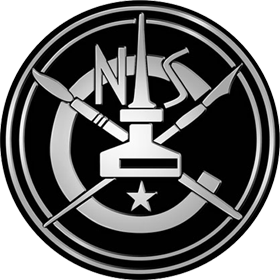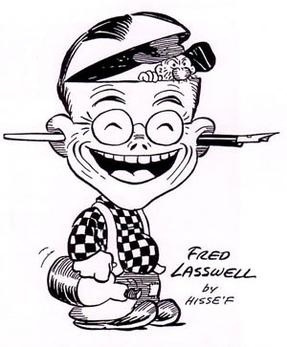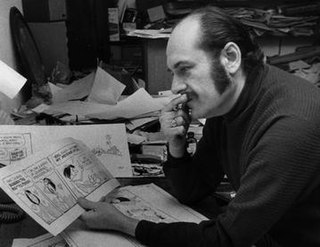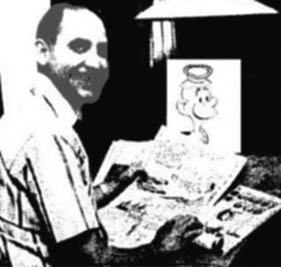| Barney Google and Snuffy Smith | |
|---|---|
 Bunky and Barney Google and Snuffy Smith (July 26, 1942) | |
| Author(s) | Billy DeBeck (1919–1942) Fred Lasswell (1942–2001) John R. Rose (2001–present) |
| Current status/schedule | Running |
| Launch date | June 17, 1919 |
| Alternate name(s) | Take Barney Google, F'rinstance Barney Google Barney Google and Spark Plug |
| Syndicate(s) | King Features Syndicate |
| Publisher(s) | Cupples & Leon, Hyperion Press, Kitchen Sink Press, IDW Publishing, Lulu.com |
| Genre(s) | Humor |
Barney Google and Snuffy Smith, originally Take Barney Google, for Instance, [1] [note 1] is an American comic strip created by cartoonist Billy DeBeck. Since its debut on June 17, 1919, [3] the strip has gained a large international readership, appearing in 900 newspapers in 21 countries. The initial appeal of the strip led to its adaptation to film, animation, popular song, and television. It added several terms and phrases to the English language and inspired the 1923 hit tune "Barney Google (with the Goo-Goo-Googly Eyes)" [4] with lyrics by Billy Rose, as well as the 1923 record "Come On, Spark Plug!"
Contents
- Characters and story
- Barney Google
- Spark Plug
- Transition to Barney Google and Snuffy Smith
- Snuffy Smith and the townsfolk of Hootin' Holler
- Topper strips
- Bughouse Fables
- Bunky
- Other toppers
- Fred Lasswell
- John R. Rose
- Legacy
- Licensing
- Toys and merchandise
- Sheet music
- Comic books
- Book collections and reprints
- Film and television
- Live-action – 1920s
- Live-action – 1940s
- Animation – 1930s
- Animation – 1940s
- Animation – 1960s
- Notes
- References
- External links
Barney Google himself, once the star of the strip and a very popular character in his own right, was at one point almost entirely phased out of the feature. An increasingly peripheral player in his own strip beginning in the late 1930s, Barney was officially "written out" in 1954, although he occasionally returned for cameo appearances, often years apart. During a period between 1997 and 2012, Barney Google was not seen in the strip at all. Barney was reintroduced to the strip in 2012, and has slowly returned to being a semi-regular character.
Snuffy Smith, who was initially introduced as a supporting player in 1934, has now been the comic strip's central character for over 60 years. Nevertheless, the feature is still titled Barney Google and Snuffy Smith.
As of June 17, 2019, Barney Google has run for an entire century, making it the third-longest running and uninterrupted comics series of all time, after Rudolph Dirks' The Katzenjammer Kids and Frank O. King's Gasoline Alley . After Gasoline Alley, it is the second-longest running newspaper comic still in syndication and producing new episodes as of 2021. [5]














